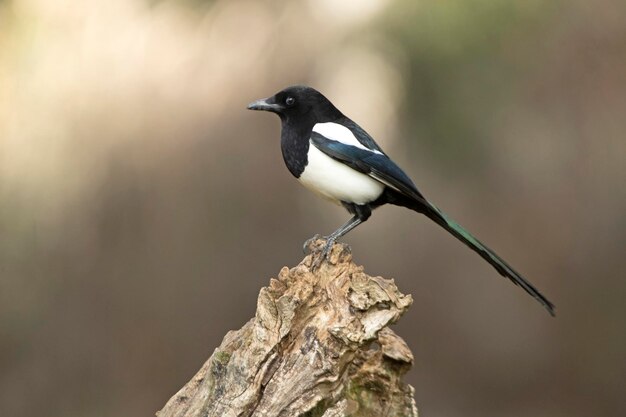Michigan, known for its diverse wildlife and abundant natural beauty, is a birdwatcher’s paradise. One of the intriguing aspects of Michigan’s avian population is the presence of various black and white birds that adorn the state’s landscapes. In this article, we will delve into the world of these captivating creatures, exploring their unique characteristics and behaviors.
Table of Contents
ToggleThe Common Loon
The Common Loon is a striking black and white bird often spotted in Michigan’s lakes and rivers. These birds are known for their unique blackheads, distinctive white necklaces, and haunting calls that echo across the water. Common Loons are skilled divers and are frequently observed swimming gracefully beneath the surface in search of fish, their primary diet.
The Downy Woodpecker
The Downy Woodpecker is common in Michigan, easily recognizable by its small size and striking black and white plumage. These birds are skilled foragers and can often tap on tree trunks for insects. Their distinctive black wings adorned with white spots make them stand out in the woodlands of Michigan.
The Black-capped Chickadee
The Black-capped Chickadee is a delightful visitor to bird feeders throughout the state. Their black caps and bibs make them easily distinguished from other bird species. These little birds are known for their energetic and curious nature, often flitting about with boundless energy. They are also famous for their distinctive “chick-a-dee-dee-dee” call.
The White-breasted Nuthatch
White-breasted Nuthatches are charming birds with unusual behavior of walking head-down on tree trunks. Their striking black caps, white faces, and bluish-gray wings make them easy to identify. Michigan’s forests provide the perfect habitat for these acrobatic birds.
The Northern Mockingbird
The Northern Mockingbird, known for its exceptional ability to mimic other birds’ songs, is a notable visitor to Michigan during its migration. These birds are gray and white, with long tails and white wing patches. Their musical repertoire and melodious tunes uniquely charm the state’s birdwatching experience.
The American Avocet
The American Avocet is a remarkable black and white bird with an upward-curved bill. They can be spotted in Michigan’s wetlands, marshes, and shallow lakes. With their elegant appearance and unique feeding style, American avocados are a treat for bird enthusiasts.
The Snow Bunting
The presence of Snow Buntings brightens Michigan’s winters. These birds, with their white plumage and distinctive black markings, are adapted to cold weather and can be seen foraging for seeds in open fields. They are a testament to nature’s resilience.
The Black-crowned Night Heron
Nocturnal hunters, Black-crowned Night Herons find their home in Michigan’s wetlands and coastal areas. With their black and white plumage and striking red eyes, they are captivating to observe, especially during twilight hours.
The Belted Kingfisher
The Belted Kingfisher is a skilled fisherman, often seen near water bodies in Michigan. Their striking appearance, with a shaggy crest, distinctive white collar, and sharp calls, makes them a favorite among birdwatchers.
The White-throated Sparrow
White-throated Sparrows are known for their melodic songs and distinctive dual-color crowns. Their presence in Michigan’s woodlands and gardens adds a musical touch to the state’s birdlife.
The Black-throated Gray Warbler
Black-throated Gray Warblers are an integral part of Michigan’s bird diversity. Their striking black throat and white undersides make them easily distinguishable. These birds are known for their foraging habits and musical vocalizations.
The Pied-billed Grebe
Pied-billed Grebes are excellent divers and swimmers, often found in Michigan’s lakes and ponds. Their distinctive bills and intricate plumage make them a fascinating addition to the state’s avian population.
The Long-tailed Duck
During winter, Long-tailed Ducks visit Michigan’s coastal areas. With their long tails and distinctive plumage, these striking birds engage in captivating courtship displays, providing a spectacle for birdwatchers.
Conclusion
Michigan’s birdwatching community is blessed with a diverse range of black and white birds. Each species adds unique charm to the state’s avian landscape from the haunting calls of Common Loons to the acrobatic antics of White-breasted Nuthatches. Birdwatchers in Michigan are treated to a colorful symphony of black and white birds that enrich the state’s natural beauty.
FAQs
- Are Common Loons permanent residents in Michigan?
Common Loons are migratory birds in Michigan, typically spending the summer and migrating south for the winter.
- Where can I spot Downy Woodpeckers in Michigan?
Downy Woodpeckers are commonly found in woodlands, parks, and residential areas across the state.
- What is the significance of the Black-capped Chickadee’s call?
The Chickadee’s call serves as a warning signal to other birds in the area, alerting them to potential threats.
- How do Snow Buntings survive the harsh Michigan winters?
Snow Buntings are well adapted to cold weather and rely on a diet of seeds and other food sources found in snowy fields.
- Can I hear Northern Mockingbirds year-round in Michigan?
Northern Mockingbirds are primarily summer visitors in Michigan and may not be heard year-round.





